Story by Summer Aguirre – Photography by Benjamin King
During the day at the Palomar Observatory, amazed visitors of all ages wander the grounds with volunteer docents, learning about the iconic site’s history and research. But the real action happens at night, when astronomers are hard at work studying the magnificence of the solar system in the darkness of the Cleveland National Forest.
Since its establishment, the Observatory has played an enormously influential role in the progression of astronomy across the globe. Over the years it has become less prominent locally, but continues to significantly impact the San Diego community.
“It’s still had a big influence in just helping all of us to understand the universe we live in and what it’s like, and I think that’s the important thing,” said Scott Kardel, an assistant astronomy professor at Palomar College and creator of the Palomar Observatory’s outreach program.
HISTORY OF THE PALOMAR OBSERVATORY
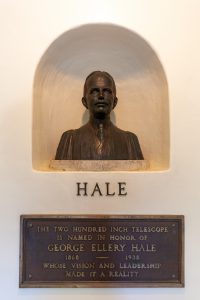
A bust of George Ellery Hale sits just inside the entrance of the Palomar Observatory. (Benjamin King/Impact)
Owned and operated by CalTech in Pasadena, the Observatory was founded in 1928 by astronomer George Ellery Hale, who received a $6 million grant from the Rockefeller Foundation to construct the scientific facility.
According to Kardel, it was built over the course of the Great Depression and World War II, so its construction was a source of great excitement for the United States.
“People all around the world heard of this,” he said, “Because this was a positive, cool science thing that was making headlines when everything else [in the country] was really bad.”
The nearly 20-year span of construction saw the creation of the Hale Telescope, named after the astronomer, and iconic white dome. Palomar docent Mark Dodd said that Hale wanted the Observatory as a whole to be a statement.
After an epic trek across the country and a stormy journey up the winding County Highway S-6, the 14-and-a-half-ton glass of the 200-inch Hale Telescope finally reached its home at the top of Palomar Mountain on Nov. 19, 1947.
IMPACT ON THE WORLD
The Observatory has undoubtedly had a huge impact on the world since its establishment, having pushed the boundaries of astronomy and uncovering truths that wouldn’t have been possible without the technology.
Several notable discoveries made at the facility include the life cycle of stars, how black holes function, and the realization that Earth is twice the size than previously believed.
Kardel said that quasars, celestial objects containing black holes, were also discovered at the Observatory, along with the establishment of Pluto not qualifying as a planet.
Currently the fourth largest telescope in the world, the Hale Telescope is a spectacle that many dream of someday seeing with their own eyes.
“When I worked there, I often met people that said to me, ‘I’ve waited my whole life to come see this. For years, I wanted to be there, to see what it was like,’” Kardel stated.
People come from all over the globe to visit the Observatory, evident by a thick guestbook at the entrance of the visitor’s center allowing those passing through to record their attendance. Leafing through the pages, there have been visitors from places as close as Valley Center, to destinations as far away as New York, Switzerland, Brazil, and Russia. Every day another name is added.
Celebrities have also visited the Observatory as the dome’s splendor drew attention from the film industry. Ideal for sci-fi movies, it served as the set for films like 1953’s “Invaders from Mars” and 1977’s “Crater Lake Monster.”
IMPACT ON SAN DIEGO
The Observatory helped solidify the San Diego area as an “important place of science,” according to Kardel.
With its close proximity, the city boosted its presence in a number of ways. Some of the lasting effects of the Observatory’s days of peak prominence are evident in the community.
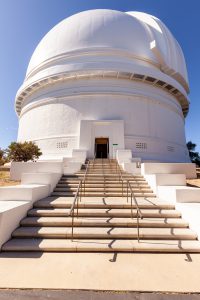
The entrance of the Palomar Observatory near the top of Palomar Mountain. (Benjamin King/Impact)
Kardel said Escondido’s logo is designed with a dome because of the Observatory, and San Diego County implemented outdoor lighting laws to reduce light pollution.
Palomar College was even influenced by the scientific site as it was named after it. The Telescope Newspaper, Comets mascot, and surrounding road, Comet Circle, were also inspired by the Observatory.
However, while still recognized around the world today, the site isn’t as famous locally as it once was.
Kardel said that San Diegans, who have the scientific site in their backyard, don’t seem to know the structure sits up in the mountains.
“It has had a big impact in a lot of ways, but it’s gotten to the point while even though it’s still used, it’s kind of forgotten in some ways, too,” he said, noting this is likely due to the fact that the dome isn’t visible from anywhere in San Diego.
Similarly, Observatory docent Deborah Baker said people don’t realize the telescope is still utilized on an everyday basis, or even that anything of such significance is happening in California. In reality, the Observatory is just as industrious as it was during the height of its fame.
“The key message we try to put out is we’re still doing research,” said Steve Flanders, the Palomar Observatory’s current outreach and event coordinator.
IMPACT ON SAN DIEGO SCHOOLS
To reach the local community and educate residents about astronomy and its importance, the Observatory places an emphasis on outreach.
Flanders said that CalTech wants to encourage students to explore science and engineering, offering classes and public tours of the scientific site to visitors.
The benefit of housing the Observatory right in San Diego’s backyard is that people have the opportunity to witness astronomy up close and personal through the outreach program.
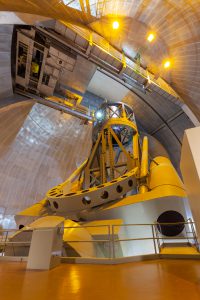
The 200-inch Hale Telescope is located inside the iconic dome near the peak of Palomar Mountain. The engineering and construction were so precise that the entire 530-ton telescope is maneuvered by one 3-hp and two 1-hp motors. This telescope was the largest in the world from its dedication in 1948 until 1993, and remains a vital tool in exploring the cosmos. (Benjamin King/Impact)
Shawn Roner, Executive Director of Escondido Charter High School and Heritage K-8 Charter School, expressed that the site has been a “wonderful resource for students.”
During the 2018-2019 school year, the entire 5th grade class of Heritage K-8 students participated in a field trip to the facility. Roner stated because the students were studying astronomy and Earth science, visiting the Observatory gave them the opportunity to see what they were studying in person and learn more about the work of astronomers.
“I took some time to talk with them about their experience,” he said, “The students shared how inspired they were to learn more about astronomy.”
John Bloom, a physics professor at Biola University who regularly teaches astronomy, had similar words. He said his field trips to observatories are valuable to students as they can see the instruments astronomers utilize and get a sense of the history of modern astronomy.
“My father remembers when as a boy, the Palomar telescope mirror came through Burlington, Iowa by train in 1936, on its way from Corning, N.Y., where it was cast, to CalTech in Pasadena, where it was ground,” said Bloom.
He explained that because his classes visit the Observatory on field trips, on one occasion he was able to bring his elderly father along so he could see the completed telescope.
Kardel mentioned that he even knew of local astronomy professors who studied astronomy and received their degrees using the Hale Telescope, allowing them to pass valuable knowledge onto their students.
“The observatory is important because everybody gets a chance to open their eyes and be aware,” Baker said, adding that it encourages people to observe.
Over the decades, this San Diego treasure has provided astronomers with an endless wealth of priceless knowledge about the mysterious opulence of the universe, that they can share with the local community and the rest of the world for years to come.
“I’m proud to know that it’s a part of San Diego,” Mark Dodd said. “I’m proud to say it’s ours.”

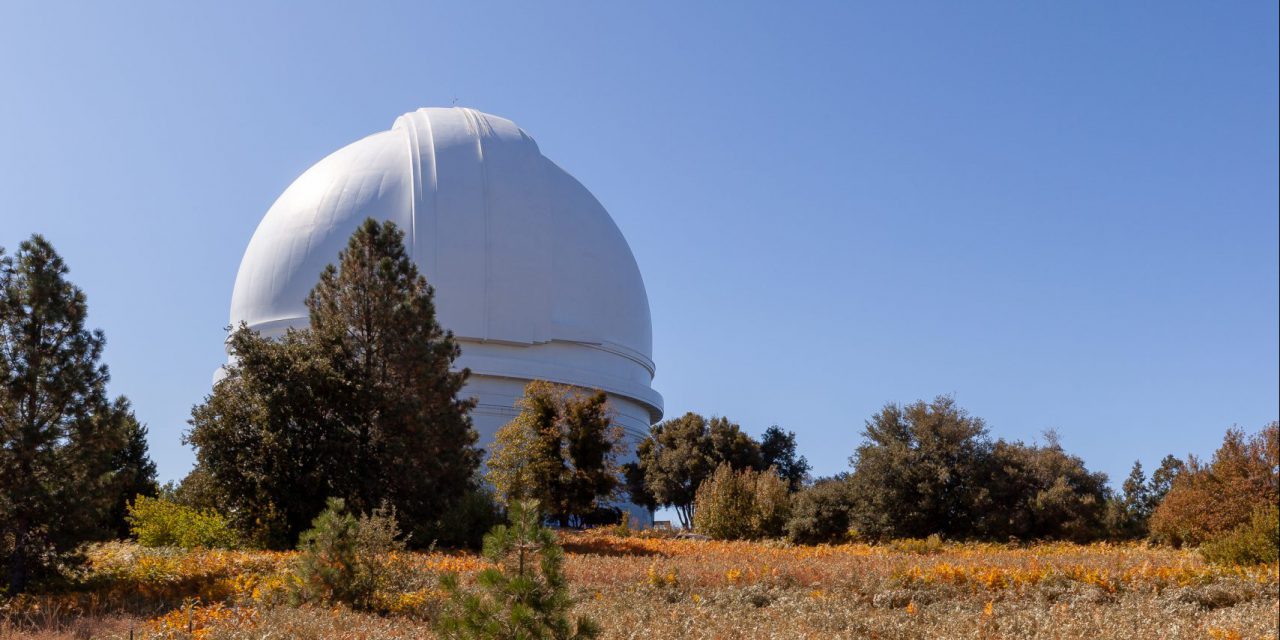
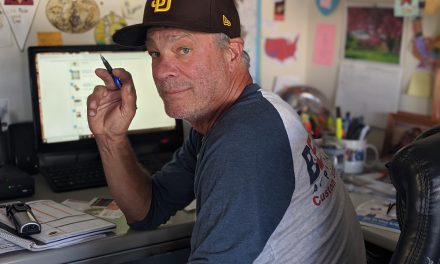



Recent Comments